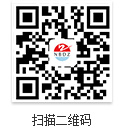Faced with many uncertain factors in the international market, how should China's textile industrial enterprises make full use of the reverse mechanism formed by the tightening of the market environment, accelerate the transformation of foreign trade development mode, foster new advantages in foreign trade competition, and accelerate the pace of transformation and upgrading? On July 5th, the China Textile Industry Enterprise Management Association invited experts and scholars from the industry to interpret the international economic situation, analyze the trend of the industry's economic operations, and strengthen exchanges and interactions between enterprises, and docking around the topic of “changes and prospects in the international market”. cooperate with.
Zhang Haiyuan, deputy director of the Institute of International Trade and Economic Cooperation and the Institute of Foreign Trade of the Ministry of Commerce, pointed out that the current situation of China's foreign trade and textile trade is a structural adjustment in the new era. . At present, China's foreign trade situation continues to improve, and there are also some uncertain factors. In the first quarter of this year, the export of textile and clothing traditional markets was stable, emerging markets were ups and downs, and the export structure accelerated the transfer to upstream semi-finished products. Other major export areas except Guangdong grew well. Driven by the surge in apparel imports, textile and apparel imports continued to grow. Although China's share of the international market has entered a downward channel, the rate of decline has slowed down. China will still play an important role in the procurement of textiles and garments. In addition to markets such as Vietnam and Bangladesh, the Ethiopian market is gaining favor.
Xia Lingmin, vice president of the China National Textile and Apparel Council and president of the China Textile Industry Enterprise Management Association, pointed out that in the first five months of this year, the textile industry's main business income was 3.7%, exports increased by 3.3%, and investment fell by 1.5%. In comparison with the total number of companies, the number of textile industry in the entire industrial sector is not ideal. It is worth noting that the reasons for the decline in investment may be related to environmental protection, policy and financial factors. However, in the retail market, the growth rate of total retail sales is not slow, and the growth rate of online retail sales is still strong in terms of consumer demand.
How to deal with the uncertainty of the current market? Xia Lingmin believes that the uncertainty of Sino-US trade friction may be a normal situation in the short to medium term, which requires the industry to be fully prepared. At the same time, we must correctly understand our current abilities and levels, and we must not blindly relax. From the perspective of domestic demand, the domestic market needs to be built well. The industry should further enhance its ability to innovate, and must adhere to the "going out" pace and create a new layout space along the "Belt and Road".
“In the face of trade friction, the industry needs to study and respond. From a business perspective, we must be self-confident and self-reliant, and focus on the profession. Maintaining openness and tolerance is a must for enterprises to achieve in the high-quality development stage.” China National Textile and Apparel Council Wang Tiankai, president of the company, said that the high-quality development of the textile industry may involve changes in quality, efficiency and power. For the industry, places that are not conducive to industry innovation should be carefully identified and resolved. Grasp the development direction of the industry and help enterprises solve problems that they cannot solve, including the joint problems of upstream and downstream industries.
“Currently, the new positioning of technology, fashion and green textiles is becoming more and more obvious. The textile industry has a very good market network and consumer demand, and has great potential in competition with neighboring countries. This is also a great driving force for the transformation and upgrading of the industry. Cao Xuejun, deputy director of the Consumer Products Industry Department of the Ministry of Industry and Information Technology, believes that textiles have their own complete industrial chain and are generally a benign industry, but the innovation base in materials and equipment needs to be continuously strengthened. "Two-in-one integration" and intelligent manufacturing must continue to deepen. In terms of quality standards, we must be more calm to make products and brands. In the aspect of green production, we must correct the problem of environmental protection. At the same time, the international layout and global resource allocation are also very important.
Cao Xuejun pointed out that now is an era of change, and the understanding and concepts of the industry also need to change. First of all, the past development is speed efficiency first. Now it is necessary to gradually pay attention to quality, consider environmental issues, and more consider the overall problem of people-centered industry development and social appeal. Second, now is the era of technological change, the industry must actively embrace new technologies. The third is the change in consumer demand. From the perspective of the external environment, trade frictions continue; from the internal point of view, consumption shows a new trend of real-time greening, so the industry must also change concepts and ideas, and management must constantly keep up with changes.
Under the unfavorable situation that cost factors are increasingly squeezing corporate profit margins, advanced management models will become a breakthrough for enterprises to adjust and upgrade. Hu Guoming, general manager of Rui Fashion Design Shenzhen Co., Ltd. pointed out that by keeping up with the development trend of “Internet +”, Rui Fashion has established a “China Trend” and “Design Collection” sample through the analysis of the industry and its own positioning. The whole industry chain business model of the four major business segments of “Huibu Mall”. Based on the new retail features and relying on the Internet, the company upgrades the production, distribution and sales processes of the apparel industry through the use of advanced technologies such as big data and artificial intelligence, and deep integration of online services and offline experiences. , effectively matching the various resources of the apparel industry chain. In addition, through the trend of trend network import, design and development of original design drafts, Huibu Mall to provide fabric support, central version of the development of sample clothing, to bring integrated services to apparel companies, has established an influential resource Integration platform.


 Mr. Chen Fei (Mr.)
Mr. Chen Fei (Mr.) 86-574-63550733
86-574-63550733 86-574-63551022
86-574-63551022 dz@dzfibre.cn
dz@dzfibre.cn



